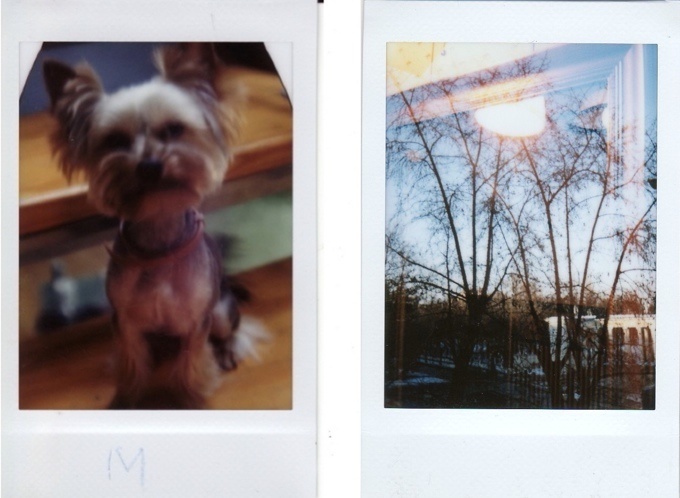Have you ever thought: "I have some cardboard lying around, I bet I could make that into an instant camera"? No? Then you're not Oleg Khalip and his team of cardboard camera constructors. They launched the Jollylook, a vintage-folder looking camera on Kickstarter on January 31, and it has already beaten its modest $15,000 goal by over $200,000.
Generally, we're a bit wary of crowd funding projects here at Fstoppers. Either they are run by companies that use them just as much to drum up excitement for a product long before release, as they are trying to get it funded, or they are put together by small outfits trying to make an oddball idea actually come to life. In both cases, they are always a bit of a gamble.

Rolling out photos to develop is by hand.
Most of these kinds of projects are far off from being actually realized when they are announced. The Kickstarter for the Jollylook, however, is one project worth talking about. It's a dead simple idea, it has already been fully funded several times over, and it's just quirky enough for me to actually want one.
A Look at the Jollylook
The Jollylook is a small (its designers say it's "a little bigger than an iPhone box"), bare-bones cardboard foldout camera. To take a picture, you unfold the camera, select your aperture from between f8 and f64 (or optionally, pinhole), and choose either a 1/250 or 1/160 shutter speed (or use bulb mode). There are no batteries to be bought or charged, as the Jollylook foregoes all electronics in favor of low-tech manual mechanisms.

Simple yet clear settings for focus and aperture on the Jollylook.
The camera takes Fujifilm's Instax mini cartridge film to produce credit-card sized color or black and white instant prints. This is a good choice for any small instant camera. The Instax mini format has become the default choice for other camera makers. The Leica Sofort uses it, as do Lomography's Instant, Diana F+ Instant and LC-A+ Instant cameras.
The pictures taken with the camera that Jollylook has posted on their Kickstarter page may be a bit less sharp than what you can get out of these other cameras, but they certainly work as images in the analog Polaroid-style aesthetic. And let's be honest here: they look much better than what you'd expect from something that marries cheap cardboard and nineteenth-century technology with instant film.

Photos taken with the Jollylook are definitely soft, but not unpleasant looking.
How to Get One
At its affordable price point (under $50 including shipping worldwide for the Kickstarter), and using such a popular film format, the Jollylook should definitely see some success with casual photographers as well as serious instant photo enthusiasts. Here's hoping that the production cameras work just as well as Jollylook's prototypes, and that down the road Jollylook will come out with Instax wide and Instax square models as well.

Folded up, the Jollylook is the size of an iPhone box.






